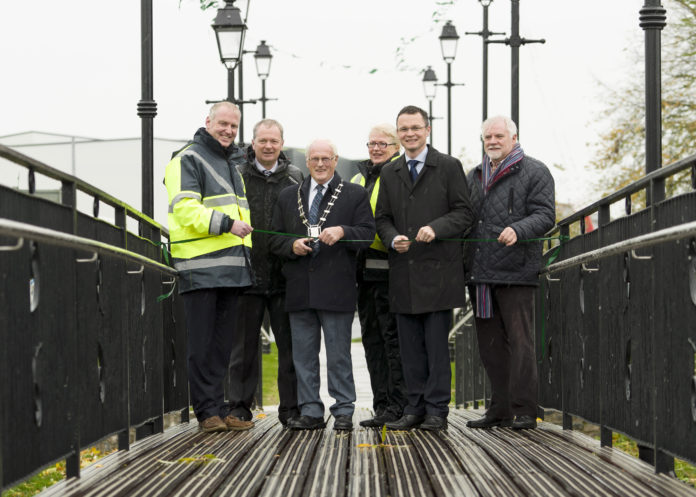
PARTS of the historic town wall in Kilmallock are visible again for the first time in generations following the completion of the town’s West Wall Walkway project.
The conservation of more than 500 metres of the town’s mediaeval defences will allow public access to a section of the wall that had been on private property.
Kilmallock was an important Norman settlement and was at the centre of Ireland’s political development from the 13th through to the 17th centuries. That rich history is evident through the rich architectural heritage and national monuments around the town.
The original circuit of the town’s defences was 1,700 metres and of this, about 1,200 metres remains standing.
In addition, there are a further four local monuments in State ownership, King’s Castle (15th century) which stands astride the main street, The Stone Mansion (16th century), The Collegiate Church (13th century, with an earlier round tower) and the Dominican Priory (late 13th century).
What makes this project unique is that visitors to the West Wall Walkway will see the same landscape as existed centuries ago, as Kilmallock never really expanded outside its original walled boundary.
A new pedestrian bridge has also been opened downstream from the existing road bridge on the Limerick Road close to the Fire Station. 28 metres in length with a two-metre wide hardwood timber deck, it provides a crossing point for pedestrians over the River Loobagh and a safe passage to the recently developed Riverside Walk.
The bridge and the walkway are part of a larger plan by Limerick City and County Council to provide a series of linked walks in and around Kilmallock. The town is ideally situated in the heart of Ballyhoura Country and a hugely attractive destination for heritage tourism.
The overall costs of the West Wall Walkway and the Footbridge amounted to almost €900,000, with funding from the Department of Culture, Heritage and the Gaeltacht, the Irish Walled Towns Network, Rural Economic Development Zone, Hinterland, and Limerick City and County Council own funds.
Cathaoirleach of the Cappamore-Kilmallock Municipal District Cllr Eddie Ryan said that the official opening of the West Wall Walkway would make Kilmallock’s rich heritage more accessible to the public.
“The West Wall Walkway is set to become a new thoroughfare for Kilmallock, providing a wonderful amenity to residents and visitors alike.”
“The people of Kilmallock value their heritage and know that it makes the town unique, beautiful and magical and the town wall is central to that vision.”
Minister of State and local TD Patrick O’Donovan TD said that over the past number of years, there had been “a massive metamorphosis in Kilmallock, with a huge amount of projects finished or nearing completion.
“The ideas have come from the bottom up and facilitated by the government. There has been a new fire station, courthouse, library, new primary and secondary schools, sewerage treatment plant and now a new pedestrian bridge and a new walkway by the wall.”
“There is more to be done such as with the medieval mansion in the town. I know the contribution that building can make into the future, as much as it made in the past.
“Over the last number of years we have been developing a rural strategy for our towns and villages and it is out of that that some funding will be secured for projects in Kilmallock,” he said.
Limerick City and County Council Area Manager Sean Coughlan added: “It is a great source of pride to see the completion of the bridge, the walkway and the restoration of the West Wall.
“And there is a pipeline of other projects for Kilmallock, such as the Stone Mansion and the East Wall,” he added.
“The projects show the important engagement that goes on between Limerick City and County Council, Kilmallock Tourism, the local community and the local development company Ballyhoura, to bring these ideas to fruition.”
He paid tribute to council architect Sarah McCutcheon, “whose passion and drive to have the walls of Kilmallock preserved for generations to come has almost singlehandedly guaranteed the completion of the project.”
by Tom McCullough
[email protected]









